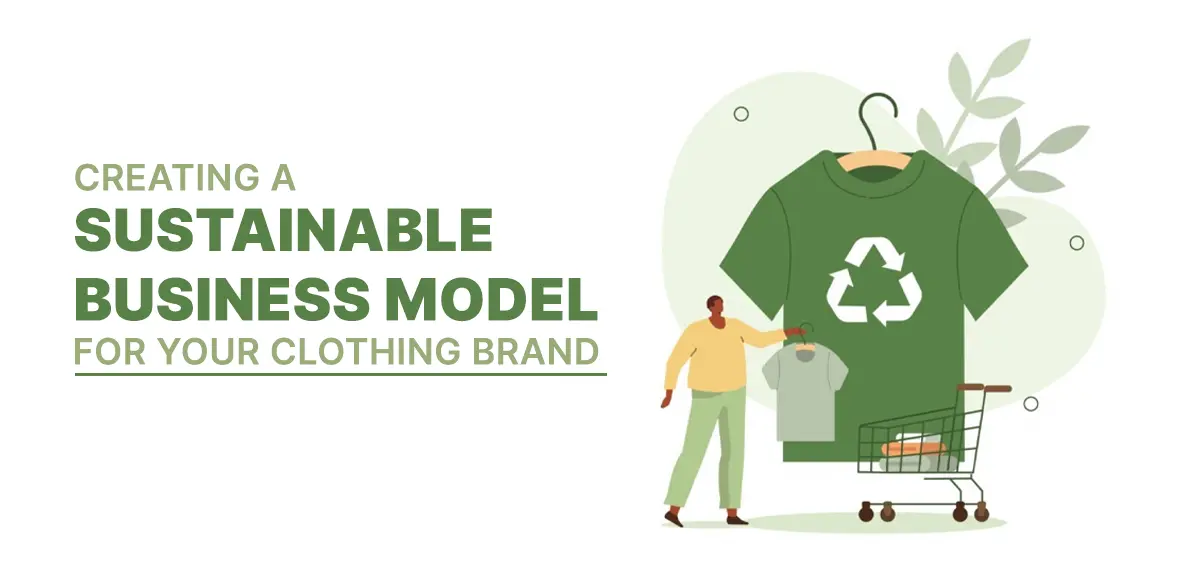With more and more people waking up to the truth of environmental pollution, the need for a sustainable fashion brand is now more than ever. Forget about people, it is quite difficult to run a fashion business, even as a manufacturer, knowing how much it pollutes the earth. But there’s one thing you can do: Embrace a sustainable business model.
Crafting a sustainable business model isn’t just a trend; it’s a commitment to ethical practices, environmental preservation, and a responsible approach to fashion. Create a business plan by keeping these factors in mind, because the future belongs to sustainability!
Sustainability in the Fashion Industry
The hands of the fashion industry are red by harming the atmosphere with tons of waste. It’s in dire need of research, re-evaluation, and redesign. One ideal way is to use right ways by adopting sustainable practices. Sustainability is defined as a system that avoids harm and promotes the well-being of the environment and its inhabitants.
There’s nothing that could go wrong in this field of life. Every person who feels responsible for their doings believes sustainable fashion is the way to a safe future.
Redefining the Industry with a Sustainable Business Model
Break from the shackles of a regular, unsustainable business model. Welcome change by altering it to a greener outlook. Don’t know where to start? Orient Apparel is here with its step-by-step guide. So, let’s dive in!
Planning
Nothing works without a workable plan. If it does, it won’t go a long way without a future-focused plan. The same applies when creating a business model from scratch. Planning is the first and may be the most essential step in building a sustainable fashion brand.
If you have worked in the fashion industry, you will already have a know-how of the complexities that can arise when choosing a sustainable approach. If you haven’t, it’s better to research, network, and consult people to guide you. Note down the drawbacks and critical points so you can have a solution ready at hand. Note down steps and their impact, and backup plans for each.
Research
After practical knowledge, paper knowledge is essential. Read magazines, attend fashion shows, and go through research publications related to sustainable fashion brand. Learn from the success of others in the business. The Internet is a good place to learn hard and soft skills to have a strong grasp of the subject area.
Competitor research is an essential step in brand creation. Especially if you are going for something unconventional like sustainability. Learn from those who are doing good and also from those who fail to keep up with sustainability requirements.
Sourcing Materials
What you put into the product formation has a lot of say. Protect natural resources by choosing alternatives to non-renewable materials. Utilize sustainable fabrics like organic cotton, bamboo, recycled polyester, and others. Compare their features digitally to find the most suitable material for your products.
Don’t forget to go for eco-friendly packaging too!
Building Your Brand Name and Story
Next up in our guide is creating a strong brand concept. For this, you must define these things precisely:
- Your clothing category and style
- The quantity and number of collections you will generate in a time period
- Materials required and suppliers to collaborate with
- Regulations to fulfill regarding a sustainable business
Come up with a powerful brand story that inspires consumers. It must revolve around protecting the environment and all beings in it. This may be your long-term brand identity and how people will remember your brand.
Finally, decide on a brand name that is both unique and related to green practices. This step can take time, so feel free to run your imagination, search online, or find inspiration in others’ work.
Educate & Market
Lastly, educate your customers about your sustainable practices. Individuals with an ethical mindset appreciate the value of eco-friendly products. Tell people how your high-quality pieces last longer, decreasing the need to buy new garments and reducing waste.
Share your journey, challenges, and successes openly. Collaborate with other sustainable brands, share knowledge, and drive innovation. Engage in social initiatives. Support local communities or environmental conservation programs. This will market your brand to reach a more relevant audience, boosting your reputation.
Some Considerations for a Sustainable Manufacturing
- Opt. for local or regional production to reduce your carbon footprint. Local manufacturing reduces transportation pollution and supports the local economy.
- Invest in renewable energy sources like solar panels and adopt energy-saving technologies to reduce your business’s overall energy consumption.
- Choose manufacturers who uphold fair labor practices, safe working conditions, and transparency in the production process.
- Drop traditional dyeing and go for natural dyes and water-based printing techniques. These are gentler on the environment and human health.
- Adapt the zero-waste approach. Minimize fabric wastage by designing carefully. Recycle and repurpose scraps.
Bottom Line
A sustainable business model isn’t something you develop overnight. It’s a continuous journey towards responsible fashion where you choose ethics every day. By weaving ethical practices into the fabric of your brand, you’re not just selling clothing; you’re offering a lifestyle.
So, breathe in and focus on one step at a time. Learn from some of the best in the market, and soon you will have your name among the best sustainable fashion brands in the world. Let’s create a greener future for the world of fashion and beyond!





